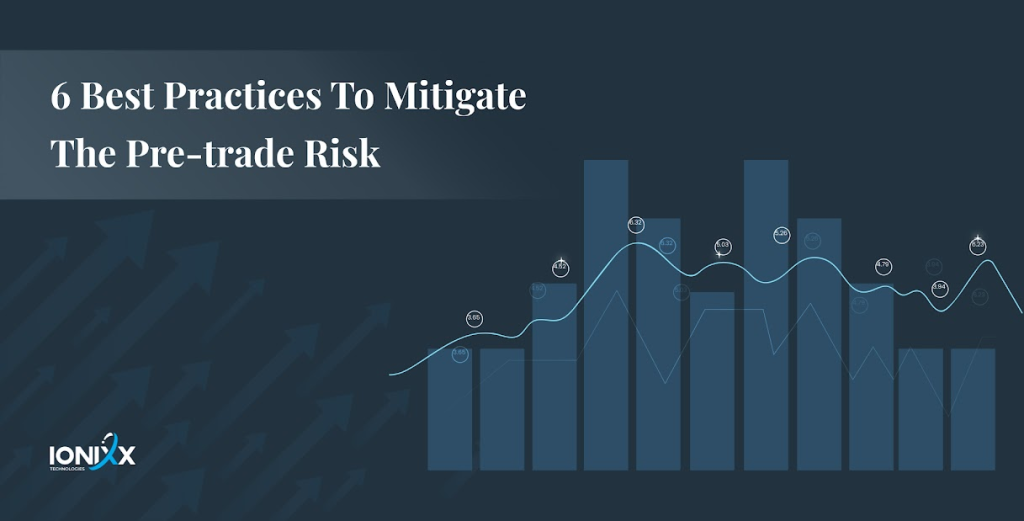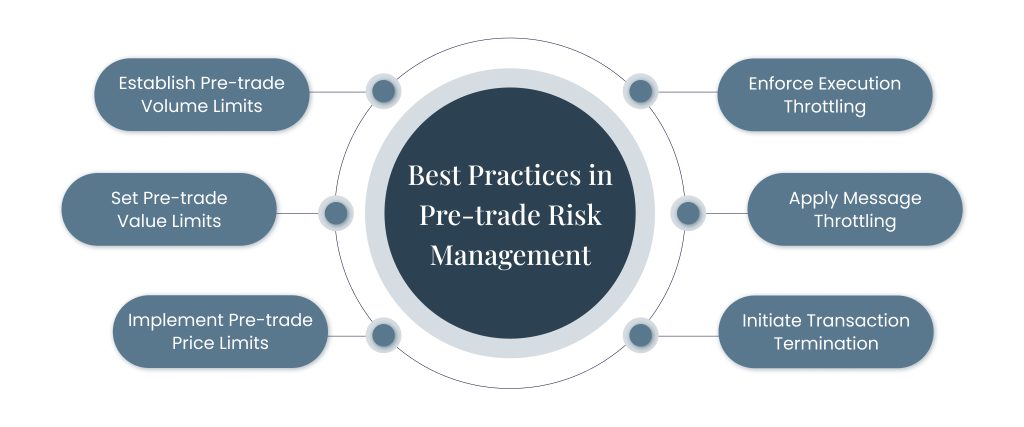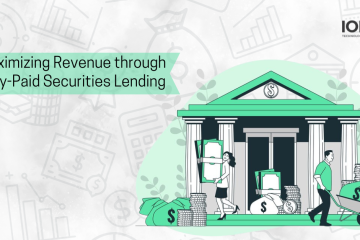
Pre-trade risk can stem from human errors, including the input of incorrect figures in buy or sell orders. Whether related to order volume, value, or size, sending inaccurate details to the market can lead to disastrous consequences.
Algorithmic trading in financial markets can introduce pre-trade risk for organizations. High-frequency trading (HFT) has been a fixture in U.S. exchanges since the 1970s and in Europe since the 1980s. Algorithmic trading gained prominence globally in the 2000s. Towards the late 2000s, several flash crashes in equity markets were attributed to algorithm and HFT-related activities.
The U.S. experienced a flash crash on May 6, 2010, when the Dow Jones index plunged by 5 to 6%. Algorithms operating across various markets were believed to have amplified the shocks, resulting in approximately 20,000 trades across 300 securities occurring at prices, deviating as much as 60% from their actual values.
In August 2012, Knight Capital incurred losses of $400 million due to a glitch in their algorithmic software. This software sent numerous erroneous orders for NYSE-listed securities into the market, purchasing them at ask prices and selling them at bid prices. Competitors utilizing HFT systems capitalized on this situation by executing high-volume trades before the automation could be halted.
Furthermore, HFT practices were held responsible for flash crashes in Germany’s sovereign bond market in 2015 and Italy’s in 2018.
These incidents prove there is a severe need to curb the pre-trade risks. Here, we will explore the best practices that can manage and mitigate the pre-trade risks and create a safer trading environment for all the market participants.
What Is Pre-trade Risk?
Pre-trade risk encompasses factors that have the potential to adversely affect your trades. These factors can be attributed to human errors or potential issues with algorithms that might introduce instability either to your organization or the broader market.
Types Of Pre-trade Risk:
| S. No | Risk | Definition |
| 1. | Order Size Risk | Order size risk in financial markets refers to the potential negative consequences associated with the size of a trading order. It involves the risks that come with executing an order that is too large for the market’s liquidity. |
| 2. | Order Volume Risk | Order volume risk refers to the potential adverse impact on a financial transaction or market due to unusually large order sizes or volumes, leading to price distortions or execution challenges. |
| 3. | Order Value Risk | Order value risk refers to the potential financial exposure or loss in a trade or investment resulting from the incorrect input or execution of an order, typically due to human error. |
Why is Pre-trade risk Important?
If there is no proper system for mitigating pre-trade risks, it may cause financial and reputational damage to brokerage firms and destabilize the capital market at a larger scale.
The Markets in Financial Instruments Directive (MiFID II) says that “an investment firm that engages in algorithmic trading shall have in place effective systems and risk controls suitable to the business it operates to ensure that its trading systems are resilient and have sufficient capacity, are subject to appropriate trading thresholds and limits and prevent the sending of erroneous orders or the systems otherwise functioning in a way that may create or contribute to a disorderly market.
Inadequate risk management systems can result in financial penalties for issues stemming from avoidable errors. A case in point is ABN AMRO Clearing Bank, which incurred a SEK 300,000 fine in 2013. This penalty followed an error made by one of its sponsored access clients, resulting in an inflated sell order. The client mistakenly entered 5,000 shares, which their trading system erroneously processed as 294,000,000 shares.
Best Practices in Pre-trade Risk Management

Pre-trade Volume Limits:
By establishing predefined limits on the volume of transactions permitted within a specific time frame, this control serves to restrict the submission of unusually large order sizes. You can choose to limit the number of orders or define acceptable percentage thresholds to ensure that orders do not surpass an established average or a specified proportion of trades for a given day or type of financial instrument.
Once the set parameters are reached, this control effectively halts any further trading activity, thereby preventing the organization from engaging in an unsustainable volume of orders.
Pre-trade Value Limits:
You have the option to establish limits on the monetary value of individual orders you place. This serves as a safeguard against inadvertent errors that could result in financial losses for the business and disrupt the market.
Similar to the volume limits system, you can also implement controls to prevent from executing trades exceeding a specified monetary threshold. Consequently, this measure allows you to proactively avert exceptional transactions by canceling them prior to execution.
Pre-trade Price Limits:
To execute orders, they must adhere to specific price constraints that you establish. These price boundaries are implemented to ensure that transactions remain within the typical price range for the relevant product.
If you endeavor to initiate a trade at a price significantly distant from the prevailing market rate, the control mechanisms will reject the transaction. This rejection allows you to review and rectify the proposed trade, effectively mitigating the risk of unintentionally purchasing at an excessively high price or selling at an unreasonably low one.
Execution Throttling:
By implementing execution throttling, you establish a limit on the maximum number of repetitive executions with identical attributes. This safeguard helps prevent malfunctioning algorithms from inundating the market.
Execution throttling acts as a barrier against glaring errors, intercepting them before they proceed. You have the flexibility to define the optimal execution rate for your organization, and this throttle ensures that you do not surpass this predetermined threshold.
Message throttling:
This operates in a manner akin to execution throttling. However, instead of solely restricting the execution of orders, it serves to block excessive submissions, modifications, order cancellations, and various other messages from reaching the trading venue.
Transaction Termination:
You must possess the capability to promptly terminate all ongoing transactions in case of any issues. This action prevents inadvertent trades from escalating beyond control by swiftly eliminating them.
Conclusion:
A strong pre-trade risk strategy should include controls designed to identify and prevent unfavorable trades. Following these practices offers an effective solution for mitigating risks associated with the trades. Ionixx provides a dynamic solution to preemptively address pre-trade risks, leveraging both cutting-edge technology and extensive trading sector expertise. Our Order Management System (OMS) is tailored to handle all your trade requirements. Reach out to us today.


